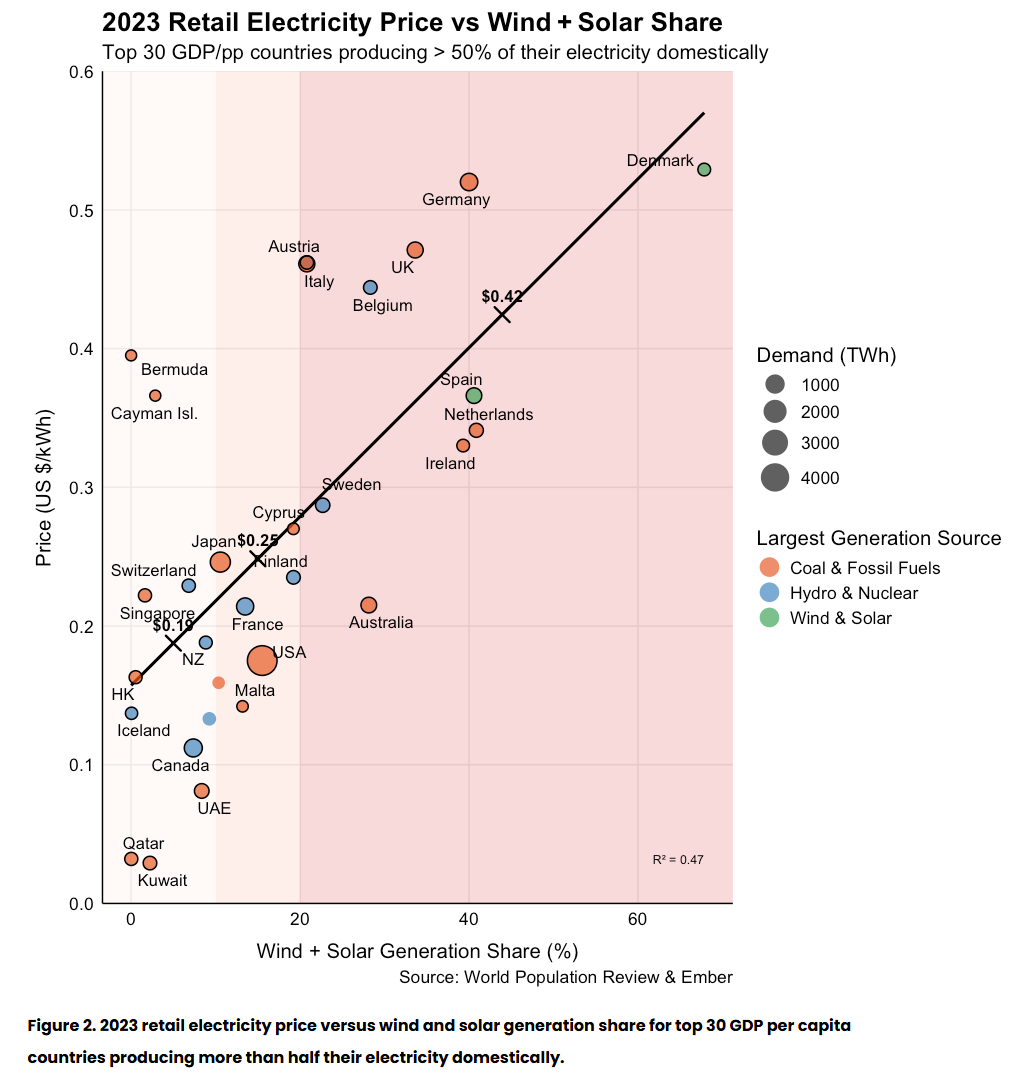The problem with wind and solar power is that they are weather-dependent and intermittent. Renewables don’t balance supply with demand. They supply too much power when it isn’t needed (e.g., in the middle of the day) and minimal power at other times, including the evening peak.
This solar glut can also force energy regulators to curtail supply into the system to prevent dangerous spikes in voltage that could cause blackouts, as were experienced in Portugal and Spain.
As a result, to balance supply with demand, massive overinvestment is required in generation, transmission, and storage to move power through space and time.
The end result is higher power bills and, in Australia’s case, taxes to pay for subsidies. Indeed, globally, electricity costs have risen in line with the share of wind and solar in power grids.

In recognition of the fact that Australia produces too much solar power in the middle of the day, which the government (taxpayers) continue to subsidise, the Albanese government has announced a new gimmick to try to stop wastage and balance supply with demand.
Under the “solar sharer” scheme, households in three states will be promised access to at least three hours a day of free solar power, regardless of whether they have rooftop panels.
The “solar sharer” offer will be available to homes fitted with smart meters in NSW, south-east Queensland, and SA, with other areas to potentially follow in 2027.
Power companies will have to provide all households with three hours of free daytime electricity from next July under the policy.
The scheme aims to soak up the nation’s abundant daytime supply of solar power, helping to stabilise the grid.
“We’re making sure more Australians can be part of our solar success story. That includes making sure people who live in apartments, are renters, or can’t get solar panels on their roof, can have access to solar during the day”, Climate Change Minister Chris Bowen said.
The peak body for electricity retailers, the Australian Energy Council, criticised what it said was a shock move by the government.
“This lack of consultation risks damaging industry confidence, as well as creating the potential for unintended consequences”, said the council’s chief Louisa Kinnear.
She said the scheme could raise costs and risks that smaller retailers could not absorb and it could force them to exit the market, which would reduce competition among power retailers.
Indeed, if “free” energy is provided in the middle of the day, it means that bills will likely go up at other times so that power companies can earn back their profits. So users will pay regardless.
The better solution would be for the government to stop subsidising the mass rollout of solar so that more power isn’t forced into the grid in the middle of the day when it isn’t needed.
The government must also solve the East Coast gas crisis by smashing the cartel via domestic reservation and, if needed, export levies on uncontacted gas.
Australia needs stable power generation that balances supply with demand. Not boom and bust power that oversupplies when it isn’t needed and undersupplies when it is.

